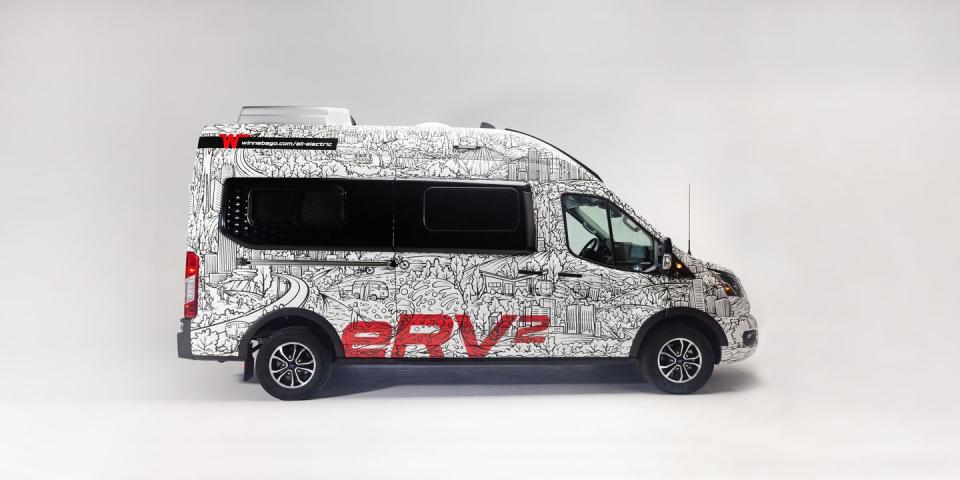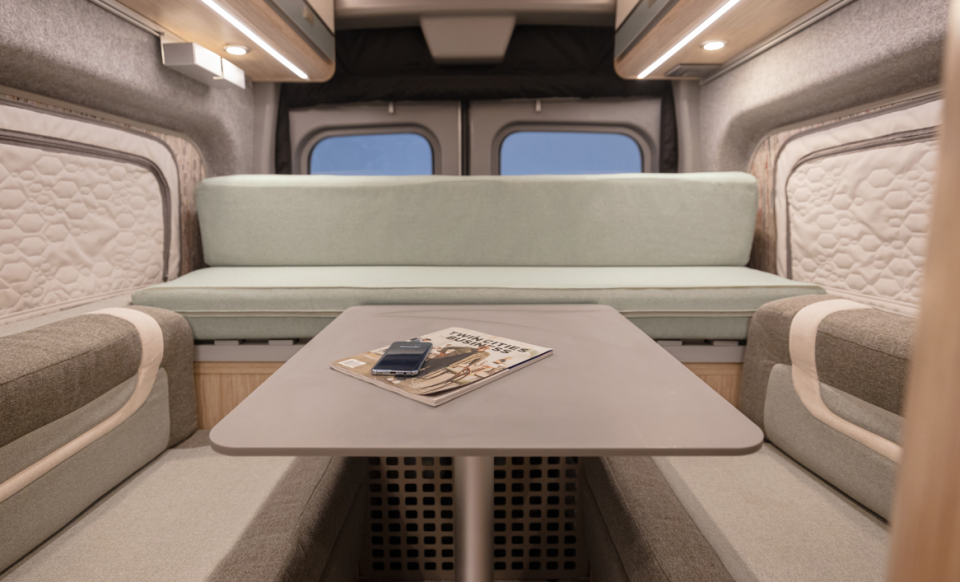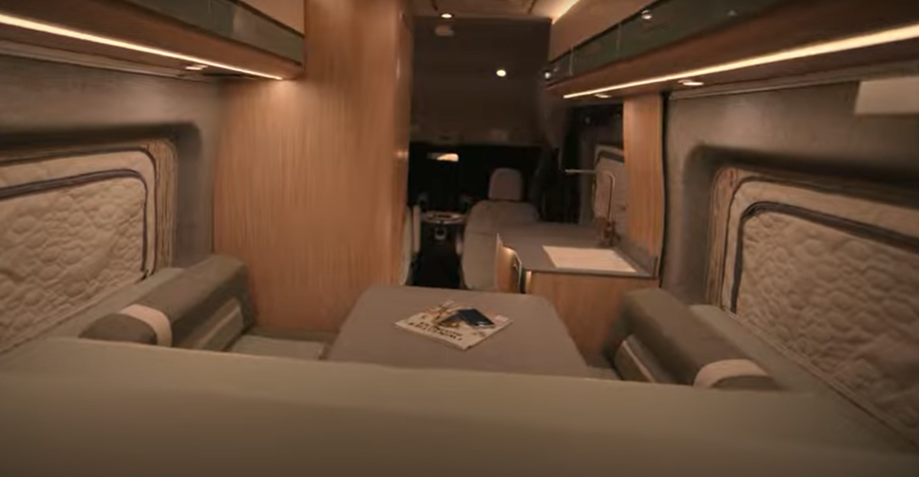Yes It’s True, Even Winnebago Is Now Going Electric

Winnebago revealed an all-electric motorhome concept that it says is the future of RVing.
The eRV2 is based on the all-electric Ford E-Transit high-roof cargo van.
Range of the Ford version is 108 miles but they’re working on more.
Winnebago, one of the biggest makers of RVs in the world, is going electric. At the Florida RV SuperShow in Tampa on Jan. 18, Winnebago introduced the all-electric eRV2 prototype, a Ford E-Transit-based RV that runs solely on electricity, both in the drivetrain and in the systems that power the rig when it’s parked.
The world is going electric and it will get there in an emissions-free RV.
“This is the first time where we really, from the ground up, looked at commercial production of electric vehicles,” said Russ Garfin, product manager at Winnebago for conversion vans and Class C motorhomes. “This is the first electric vehicle that will be available in the commercial market in North America, for sure.”
While the prototype revealed in Tampa rode on the Ford E-Transit, the production version could be based on a product from Stellantis or Mercedes, Garfin added. The question is range.

The Ford E-Transit van that Winnebago chose as the basis for the eRV2 prototype rides on the “cargo van high-roof” version of the E-Transit, the largest of the three E-Transit vans Ford offers. That van has a range of 108 miles from a 67-kWh battery, the shortest range of the three E-Transits, but it’s supplemented by a 900-watt rooftop solar array on the Winnebago eRV2. Plus, the high-roof model packs the most room inside of the Fords, with 6-feet-9-inches of standing room inside. The E-Transit’s electric motor makes 266 hp and 317 lb-ft of torque at just over zero rpm. In case yours ever needs service, Ford says it has a network of more than 650 Commercial Vehicle Centers across the US plus over 2300 electric-vehicle certified dealers.”
Winnebago said in a release that it is looking at range-extending options but clarified that a production version of the eRV2 would be all-electric, not a gas or diesel hybrid.
“We are not ready to share the final chassis configuration but expect to announce that later this year,” a spokesperson said. “The electric vehicle marketplace is rapidly evolving, and there will be good opportunities for us to improve the eRV2 range for our launch with dealers.”

But while Ford seems to be a frontrunner for the Winnebago business, it’s not signed, sealed, and plugged in yet.
“Every chassis manufacturer that we use currently, whether it’s Stellantis, Mercedes, or Ford, they’re constantly promoting their attention to increase range and launching new products in the future with more range,” said Garfin. “So we’re looking for the right partner. Hopefully, it’ll be Ford, but it could be Mercedes. Eventually, obviously, we’ll be building on all of those products.”
So you could get a Ford, Mercedes, and some Stellantis Winnebago. Or, eventually, one from each.
Winnebago created its own onboard battery to power the interior lights, fans, and whatever other appliances ride in the eRV2. It’s the result of a partnership with Lithionics Battery and is called the IonBlade, “the most powerful, compact, and safe lithium battery system available today,” according to Winnebago. It features a 48-volt system with what Winnebago says is “more than 15,000 usable watt hours,” or 15 kWh (one shy of the entire battery pack that powers the Mitsubishi iMiEV electric car). The house battery incorporates a unique thin lay-flat design stored beneath the floor to maximize interior space, and it meets the highest safety standards with UL safety certification No.1973, Winnebago says.
In addition to the use of recycled materials throughout, the eRV2’s interior is “inspired by modern Japandi principles, a fusion of Japanese and Scandinavian design that creates a clean, calm, and multi-functional environment. This includes a five-in-one sleep/lounge and two adaptable workspaces with built-in charge points and a high-speed Wi-Fi router for optimal data streaming.”
No word about an on-sale date or a price yet.
But the new eRV2 joins a market that has been expanding since the RV Industry Association started keeping records in 1980. RV shipments from manufacturers were at 100,000 a year in 1980 and hit 600,000 a year in 2022. Only a few dips for the recession and COVID slowed that rise.
Buyers are increasingly younger, too. The RVIA says new buyers were an average of 33 years old, spurred by an influx of people who suddenly realized they could work from anywhere. Younger buyers tend to be more interested in zero-emissions and EVs. Hence, the eRV2. All it needs is more range. And they’re working on that.

 Yahoo Autos
Yahoo Autos 